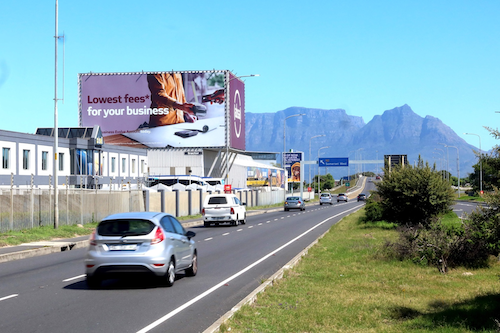Mali Motsumi-Garrido, Sales Director at Tractor Outdoor, says that when it comes to outdoor media, both static out of home (OOH) or digital out of home (DOOH) media can both play a role in your media strategy.
Within media circles, you often notice that the average ‘water cooler’ conversation grows somewhat vehement when it comes to extolling the apparent virtues or weaknesses of certain media types. It’s black or white, this or that, for or against. And outdoor media is no exception, with media planners often having very persuasive views on whether advertisers should be investing in static OOH or DOOH media.
You might hear: ‘Static is completely redundant, DOOH’s dynamic nature and advanced measurement capabilities have blown it out of the water’ or ‘static OOH is making a massive comeback, thanks to loadshedding,’ – depending on who you talk to.
Perhaps a more balanced, albeit less compelling, view is that one is not necessarily better than the other, but one might be a better fit for your campaign, depending on your objectives.
In recent years, DOOH has gained appeal thanks to the advent of technology. According to Outdoor Auditors, almost 2.3K static advertisements have been substituted by digital options. Its adaptable nature enables marketers to make changes to campaigns in real-time, based on real-life data. DOOH’s digital capabilities also allow for greater transparency as campaigns can be measured in more granular detail. Furthermore, programmatic buying can result in less media wastage, with campaigns served according to pre-defined parameters.
DOOH campaigns are ideal for short-term call-to-action campaigns, while programmatic DOOH (or pDOOH) can be leveraged for moment targeting on data-driven triggers.
Bear in mind that despite the cold, our numbers show that people are still out and about in winter, and it’s when temperatures plummet (or soar) that DOOH can really be magic. These triggers, linked to external conditions, enable creative storytelling. Next time you’re heading home on an icy evening, pay extra attention to that hot chocolate ad that shows up on a digital billboard on your commute home. Nope, it’s probably not a coincidence and more likely to have been specifically triggered by the cold, enticing you to try a brand’s decadently warm beverage.
Finally, if you’re looking primarily at attribution and footfall KPIs, pDOOH is probably the one for you.
But don’t for one second think that static OOH is disappearing, quite the contrary. The static occupancy rate in South Africa has seen a 4% increase since last year. As a media owner, we are seeing increased demand for large format static and geo-targeted campaigns, especially around key retail nodes, as well as a keen interest in iconic sites at key locations.
Static OOH is the true reach-build medium, and within a fragmented media world, is one of the only non-digital channels demonstrating an increase in reach. It offers around-the-clock exposure and has been proven to increase consumer trust and brand affinity while having a direct impact on spontaneous brand recall.
Classic OOH provides marketers with a canvas for creative extensions, allowing brands to really push the boat out, if they wish. The combination of reach and the unsurpassed creative opportunities that static offers make it unmissable, capturing attention and driving talkability. We’re seeing brands embrace this, with more briefs calling for custom builds that range from frames that contain live vertical gardens to those that look like a burning building, with cutouts, extensions, LED technology applications and everything in-between. Static OOH has become a stage for the brand to tell a story.
Static OOH currently has more available sites than DOOH, meaning that it covers a broader geographical area, allowing it to upweight a campaign where digital isn’t able to.
But it doesn’t need to be a case of either/or. Depending on the campaign objectives, marketers can effectively incorporate static OOH and DOOH as part of the same campaign, effectively ‘following’ consumers throughout their day, across different touchpoints and while audiences are in different frames of mind. Here, it is key to target the creative for each different format and application, exploiting the intrinsic characteristics of each.
You might want to use static for its wide geographic footprint and to gain high campaign visibility, or by leveraging a fantastic eye-catching creative installation or extension to achieve brand prominence.
You could then engage DOOH to activate the consumer journey through creative storytelling and dynamic creative executions, bringing in powerful calls to action. Embrace the granularity and targeting capabilities that pDOOH is famous for and activate campaigns during certain moments, increasing relevance or reach.
What is the key thing you should take away from this? When it comes to outdoor media, both OOH and DOOH have unique strengths and can work harmoniously together. Think of them as the power couple that, when cleverly engaged, will contribute to an impactful media campaign.
TRACTOR OUTDOOR
https://www.tractoroutdoor.com










